Ants, Ants, and More Ants: The Most Common Ants that are Pests
Ants, Ants, and More Ants: The Most Common Ants that are Pests
Ants are one of the most common pests in the U.S., but there are so many more kinds of species than we may realize. Many ants behave similarly, as they all prioritize taking care of the colony and the queen above all else. While all types of ants can be treated by pest control, it may be helpful to know the differences between the most common ants in order to determine the steps to take to get them out of your home.
Carpenter Ants
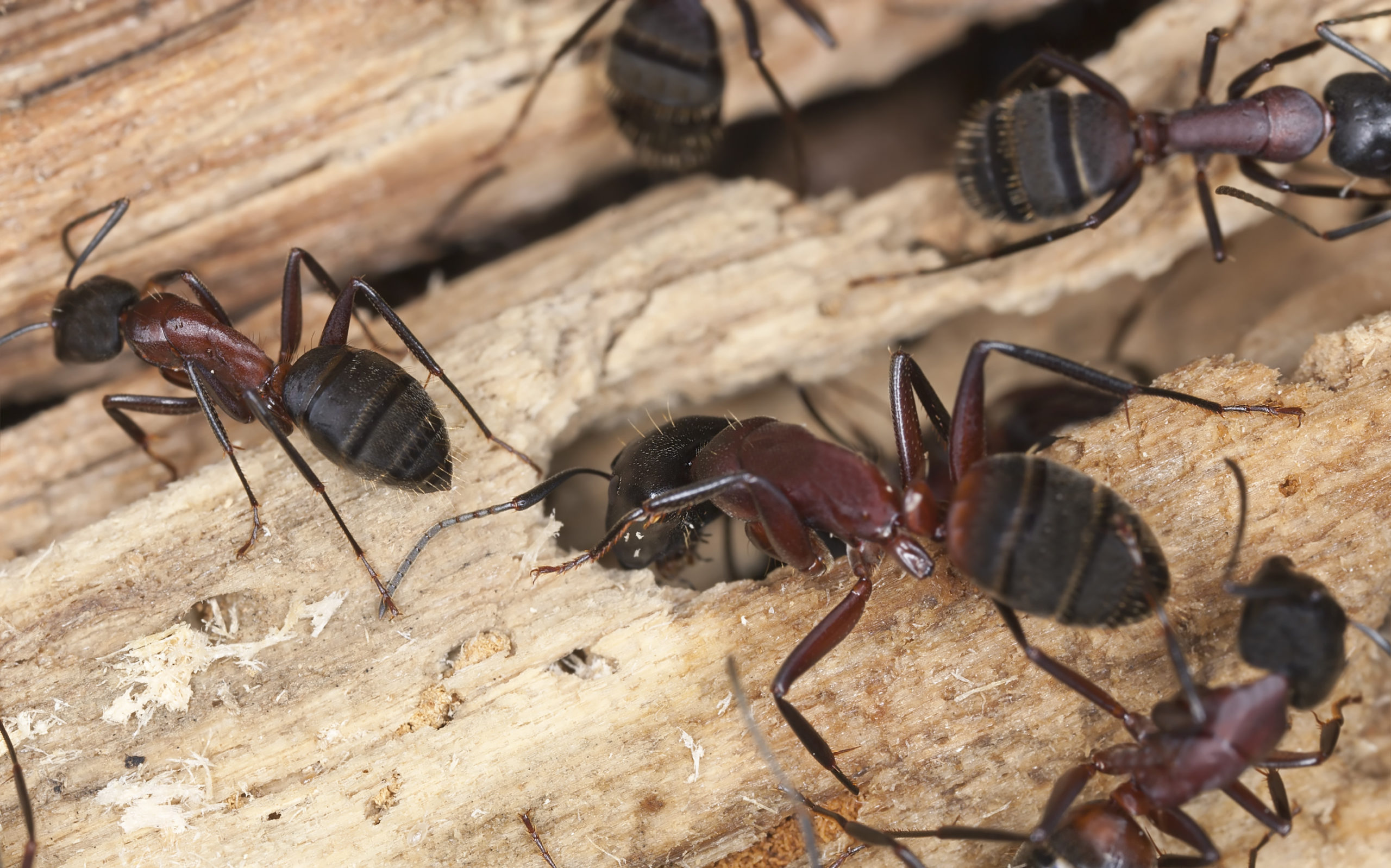
These ants behave similarly to termites, in that they burrow in wood and can inflict thousands of dollars in damages to a home. Carpenter ants get their food, like aphids, outside of their nests, but they burrow homes in dark, enclosed places like crawlspaces, attics, insulation, and wood. They even prefer moist and decaying wood, similar to termites. They are usually a combination of red and black in color and are mainly nocturnal. These ants don’t actively seek out humans to attack, but their painful bite is a good reason to stay away from these pests. Any ant infestation provides a good reason to call pest control, but carpenter ants require an immediate call before they inflict too much damage on the house.
Citronella Ants (Yellow Ants)
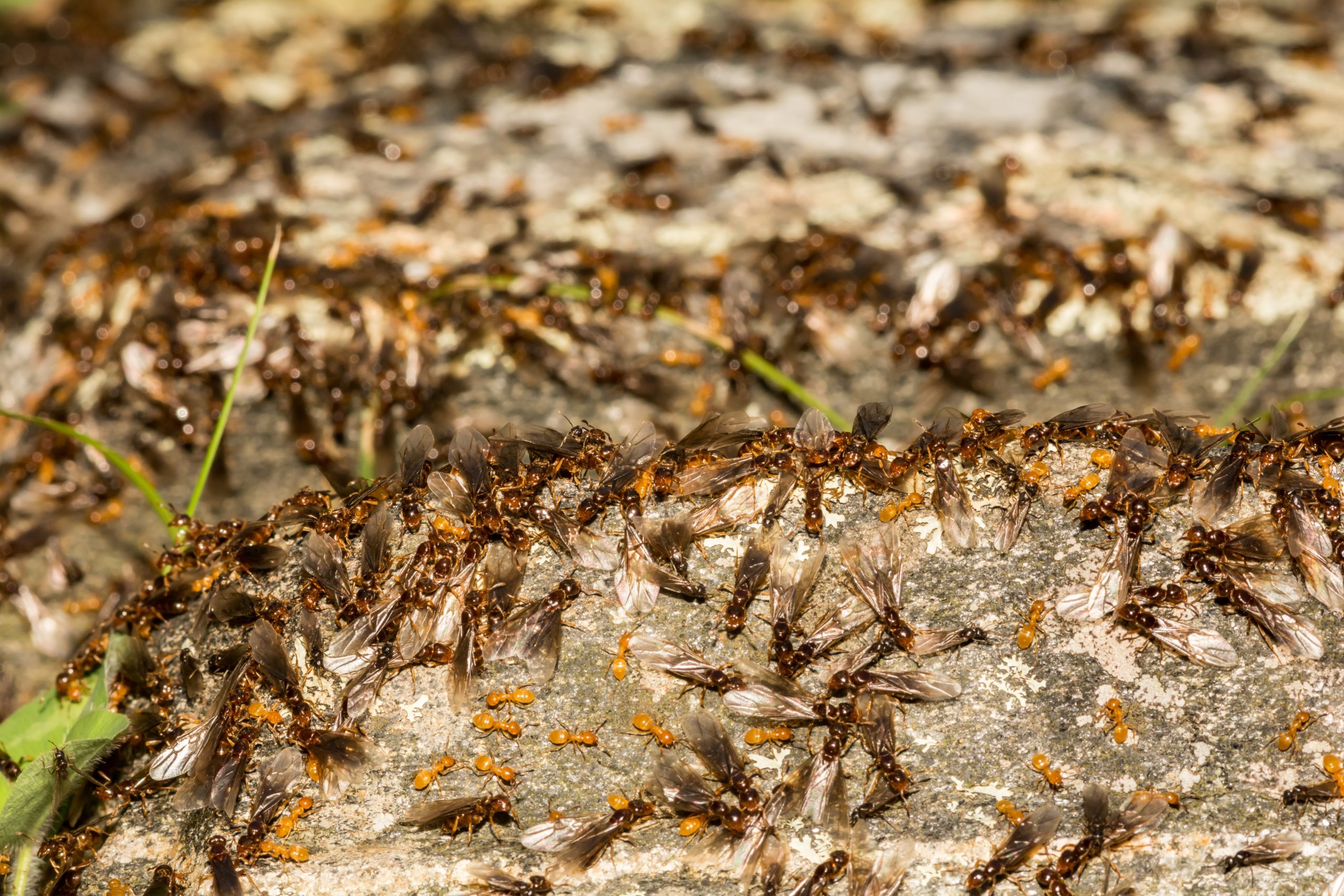
Citronella ants got their name from the lemony citronella scent that is dispersed when they are squished. They are also referred to as yellow ants because the worker ants are a light yellow color, while the other ants are darker brown. They have a very specific diet of honeydew from aphids, so yellow ants usually don’t attempt to get inside houses. Yellow ants are most often found when digging in the dirt. They are found around the foundation of a home, or in the hidden parts of rocks, logs, and lawns. These ants become a large problem only when they swarm, which lasts for a few days. Citronella ants are best treated by using repellants rather than bait due to their strict diets.
Crazy Ants
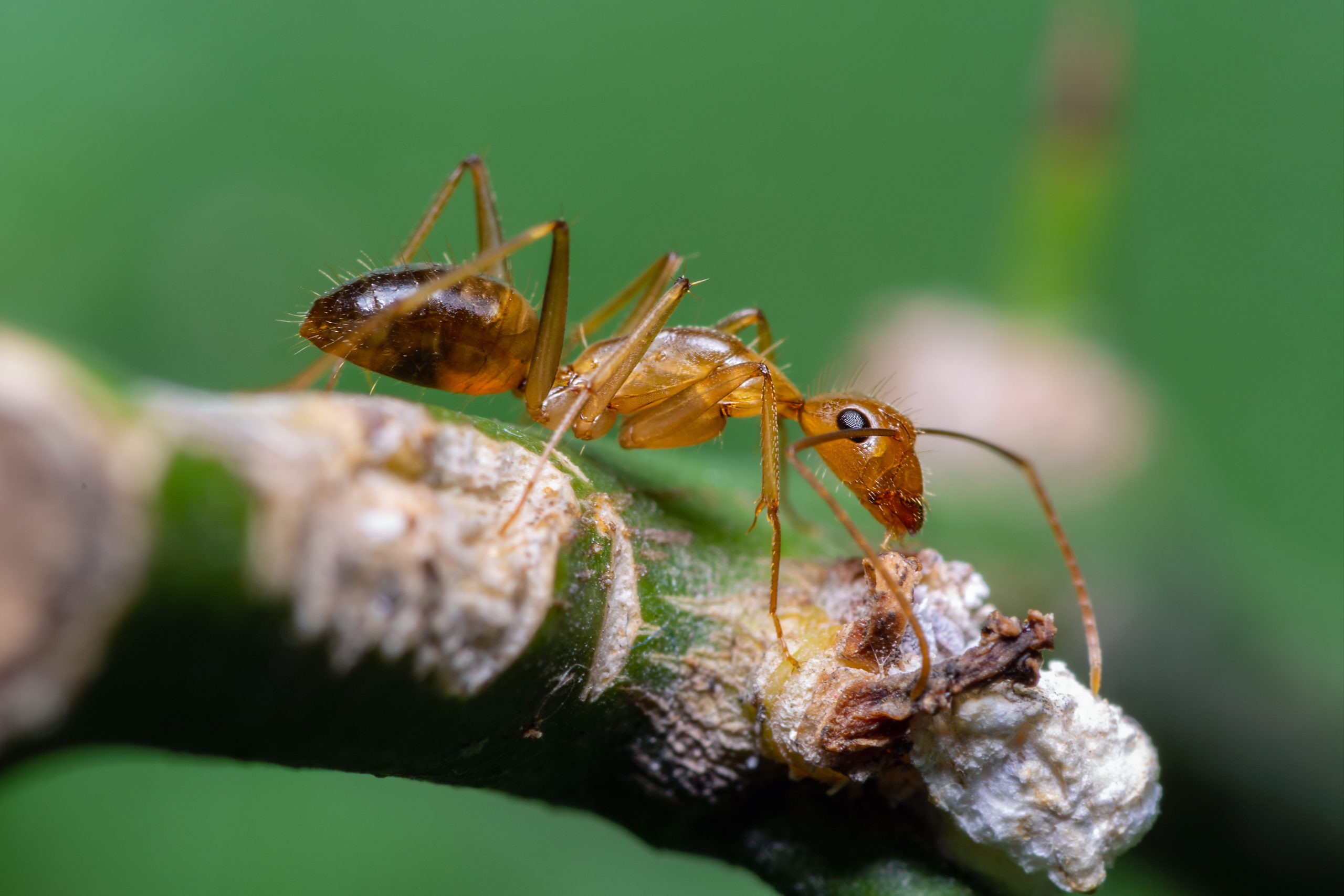
Appropriately named, these ants move very chaotically and quickly on their own trails that don’t use normal ant pheromones. This makes them a chore to catch and kill, as you can imagine. They are not bound to the immediate areas around their nests for food, so they will travel quite a ways in search of good food. Crazy ants are black or brown and have longer back legs that allow them to run so erratically. They are scavengers and omnivores, meaning that they will eat anything from other insects to fruit to sweets. You may think with a name like “crazy ants” that they would be aggressive and unpredictable, but they do not bite humans very often, and the pain from their bite doesn’t last for long.
Fire Ants
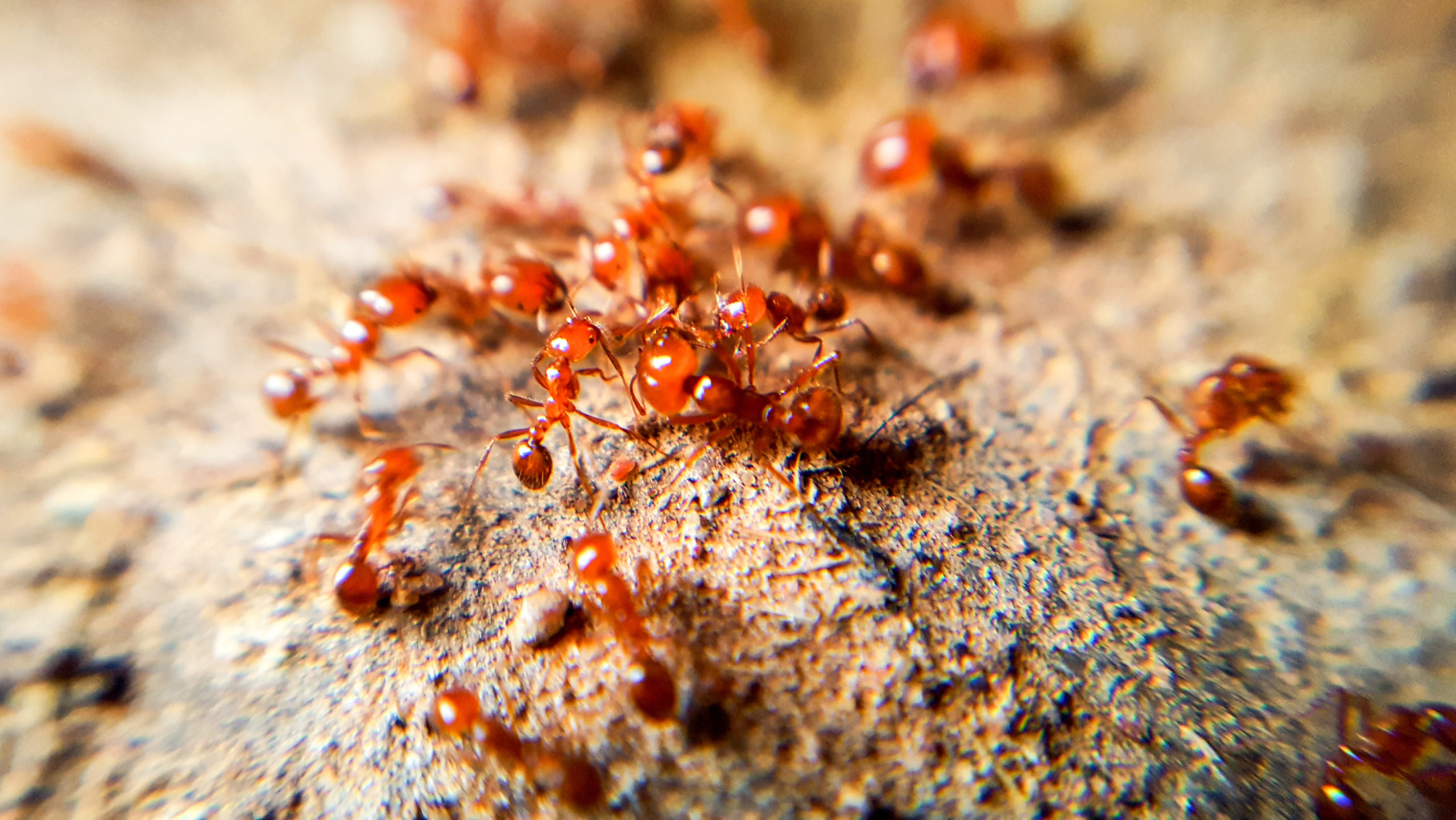
Thankfully, fire ants prefer the open spaces of the great outdoors, but they can still become pests if they decide that your front or backyard is prime real estate. These ants are mainly aggressive only when their nest is disturbed or stepped on. Their name not only applies to their vivid red color, but also to the fiery pain from their sting when they attack. Fire ants need to live near moisture, so lawns and landscaping that regularly receive water are their favorite residential areas to live. They infest many areas very quickly, so eliminating one fire ant nest does not necessarily guarantee that the pests are gone. Fire ants often require pesticides made specifically for them, as they can resist the general insecticides very well.
Odorous House Ants

Both these ants and pavement ants are commonly lumped into the title of “sugar ant,” which is any small ant that is found in kitchens and naturally drawn to sugar. Odorous house ants are likely the prime suspect of an ant infestation inside the home. They will make their homes anywhere; since each colony has multiple homes and queens, they can be more flexible with the location of each home base. Their favorite locations include under or inside wood, stones, debris, mulch, walls, insulation, flooring, pipes, and the nests of other animals. The main focus of odorous house ants is vegetation and food, so they usually find their way inside homes by following the trail of any plant or tree that comes in contact with the house itself. This is why it is important to keep all landscaping trimmed back from the home, since many pests can easily walk along the vegetation to the house if they are touching.
Since these ants have multiple homes and colonies within each colony, it is important to find all of the nests. Eliminating one is not eliminating all of the ants in the area. Odorous house ants thankfully don’t bite, sting, or cause damage to a house, but they quickly become pests due to the sheer number of them that can exist in one small area.
Pavement Ants
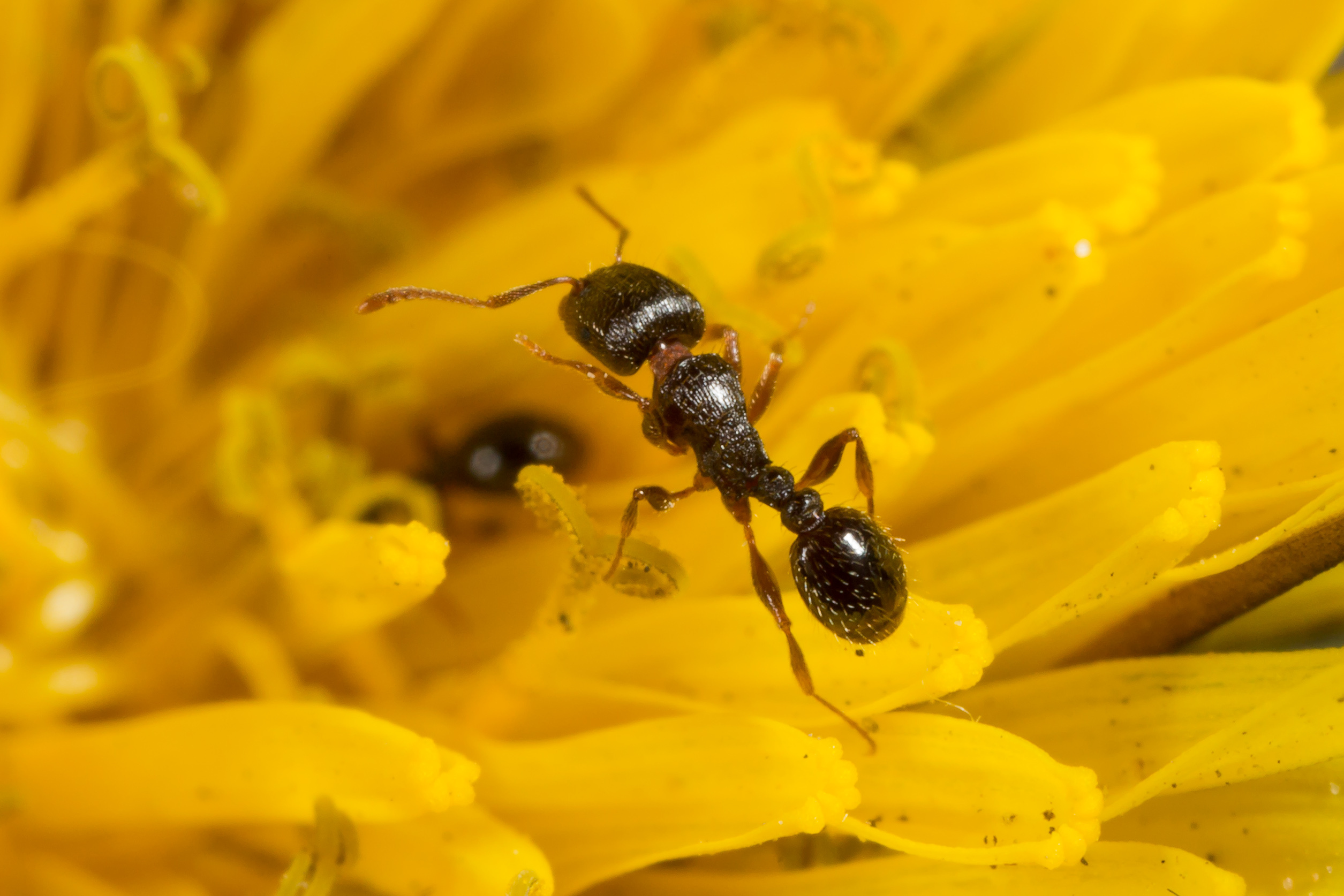
As stated earlier, pavement ants are often confused with odorous house ants since they both gravitate towards the kitchen and sugary substances when they get into a home. Pavement ants also have multiple queens and nests underground within one colony. These ants get their name because of their ability to burrow in the dirt underneath concrete layouts such as driveways, sidewalks, and patios. Pavement ants can be recognized by their two spines that look like small bumps between their thorax and abdomen. They are brownish-black in color and are found all across America. Pavement ants do not sting humans often, unless a person is standing on their nest. Spraying pavement ants inside the home will not solve anything, since more ants will arrive to replace the worker ants who were killed.
Thief Ants
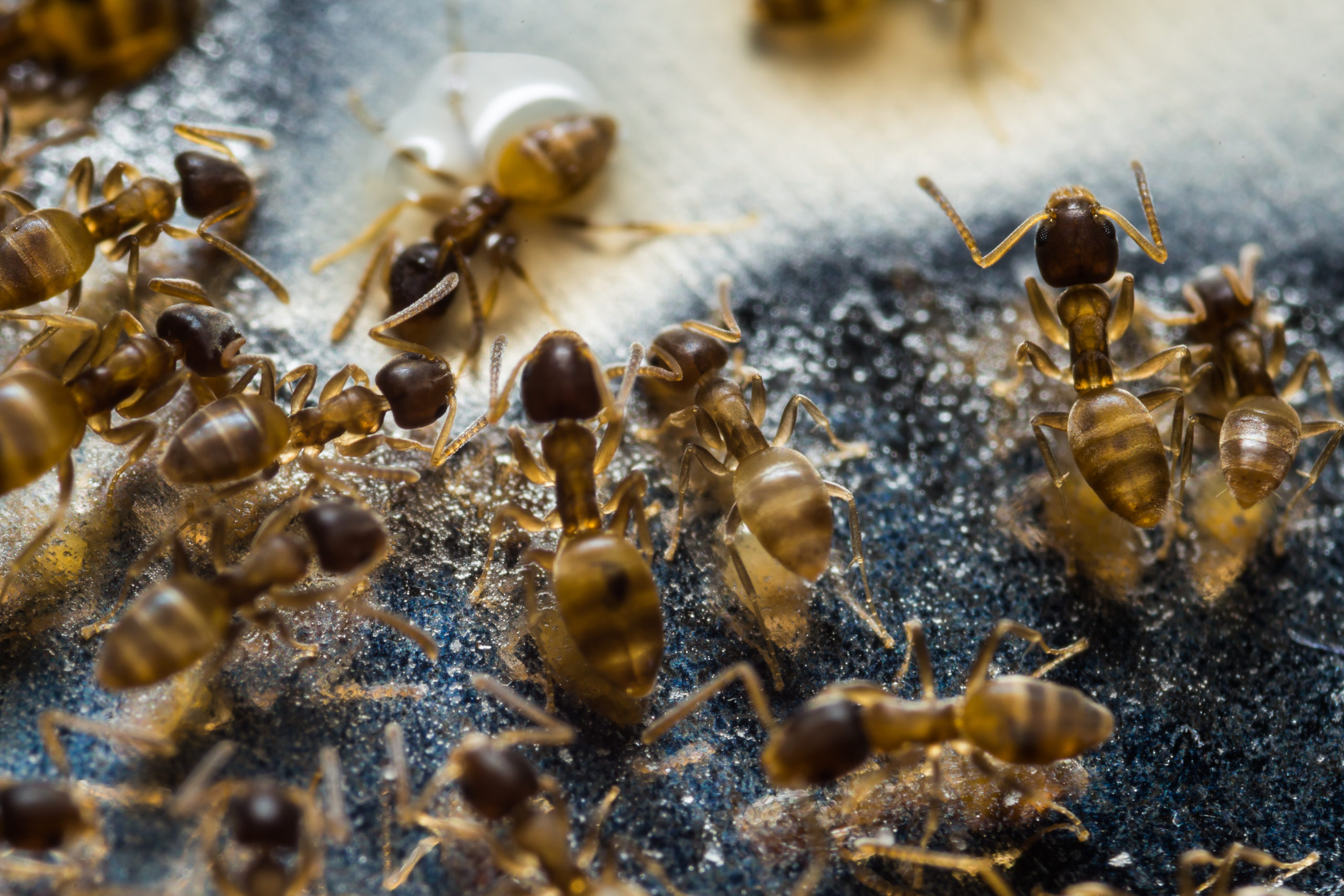
The source of the Thief Ant’s name is likely obvious based on the word itself. They steal from other ant colonies, and specifically take food and eggs. Thief ants prefer nesting in dark, tight spaces that are far from humans, like inside walls or under concrete. They are yellow or brownish in color, and are very small, usually only maxing out at three millimeters in length. Thief ants are also referred to as “grease ants,” since they are drawn to greasy foods and smells. Bait that has some form of grease on it is usually effective for this reason. Pest control is likely required to completely eliminate thief ants since their nests are so well hidden.
Pest Control Works on All Ants
No matter what type of ant you may find in or around the house, it is a good call to contact pest control if there is a sign of infestation. Small traps and homemade remedies may stop some of the ants from wanting to come inside, but pest control is equipped to handle the seemingly endless hordes of ants marching in your home.
Citations
Ardoin, J. (2021, September 13). What are the different types of ants? Lawn Love. Available at https://lawnlove.com/blog/what-are-the-different-types-of-ants/ (Accessed on February 24, 2022).
Hansen, Dr. L.D. (2012, September 6). The three most common ant species. Pest World. Available at https://www.pestworld.org/news-hub/guest-columnists/the-three-most-common-ant-species/ (Accessed on February 24, 2022).
Lupo, L.J. (2021, December 8). 9 types of ants (and how to get rid of them). The Spruce. Available at https://www.thespruce.com/getting-rid-of-ants-at-home-2656296 (Accessed on February 24, 2022).
Pellitteri, P. (2010, May 7). Citronella ants. University of Wisconsin-Madison: Wisconsin Horticulture. Available at https://hort.extension.wisc.edu/articles/citronella-ants/ (Accessed on February 24, 2022).

